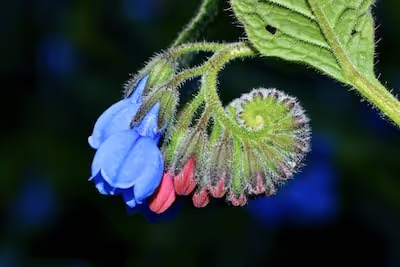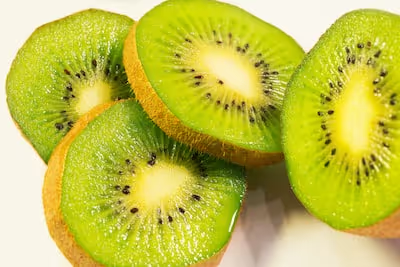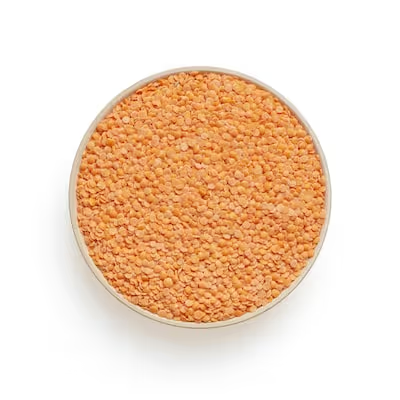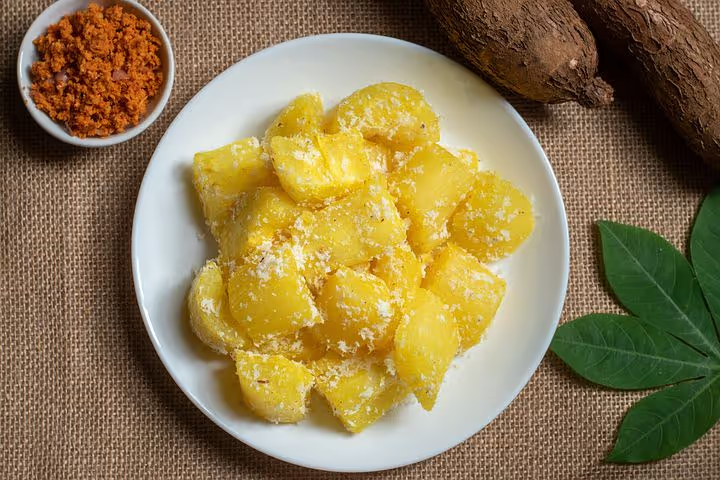Growing Paprika: How to Grow Healthy, Flavorful Peppers

Growing Paprika
Growing paprika starts with planting pepper varieties like Boldog or Alma, suited to heat and full sun. Sow paprika seeds indoors 8–10 weeks before last frost, then transplant seedlings outdoors after temperatures top 60°F. Once thriving, these peppers ripen from green to vibrant red—ready to be dried, ground, and sprinkled generously on dinner plates; read on to cultivate your own spice adventure.
Cheatsheet: Grow Prize Paprika at Home
🌱 Variety Choice
Select Capsicum annuum for sweet paprika. Look for ‘Szegedi’ or ‘Alma’. Each plant yields up to 10 peppers.
☀️ Location & Soil
Plant in full sun, 6-8 hrs/day. Soil: Well-drained, organic-rich, pH 6.0–7.0. Add compost for texture.
📆 Sowing Schedule
- Sow seeds indoors 8-10 weeks before last frost
- Germinate at 75–85°F (24–29°C) for 7–14 days
- Transplant after soil warms to 65°F (18°C)
💧 Water & Care
- Keep soil consistently moist, not soggy
- Mulch to retain moisture, prevent weeds
- Stake plants or use cages for support
🍃 Feeding
- Add balanced organic fertilizer at planting
- Feed with fish emulsion or compost tea every 4 weeks
- Avoid excess nitrogen (leads to fewer fruits)
🦠 Pest & Disease Guard
- Inspect for aphids, spider mites, whiteflies
- Apply neem oil as needed
- Rotate crops yearly to curb disease
🌶️ Harvest & Drying
- Harvest when fully red, 70–90 days after transplant
- Air dry or use dehydrator (120F/50C) until brittle
- Grind to powder; store airtight, cool, dark
🛠️ Tools and Products You'll Need
- Paprika seeds
- Seed trays & heat mat
- Organic compost & mulch
- Trowel, watering can, garden gloves
- Stakes/cages
- Dehydrator or drying rack
- Airtight containers
🥗 Nutrition & Benefits
Rich in vitamin C, potassium, and antioxidants. Dried paprika contains 7x more vitamin C than raw peppers.
🌾 Self-Sufficiency Bonus
One mature plant can supply a home cook with fragrant, pesticide-free paprika for a year.
Step 1: Start seeds indoors 8-10 weeks before last frost using seed trays and heat mat at 75–85°F (24–29°C).
Step 2: Harden off seedlings, transplant outdoors after soil reaches 65°F (18°C), spacing 12–18 in (30–45 cm) apart.
Step 3: Mulch and stake plants. Water as needed. Feed monthly with organic fertilizer.
Step 4: Pick peppers when deep red. Dry and grind for flavorful, fresh paprika.
-
Growing Paprika: from seed tray to smoky, scarlet spice
I grow paprika for flavor first, yield second, and color always. The plant behaves like a mellow Capsicum annuum cousin that rewards patience and steady care.
Paprika usually means ripe, dried, ground peppers bred for sweetness, aroma, and pigment. Spanish pimentón and Hungarian types lead the pack, ranging from sweet to lightly biting.
Choose the right paprika varieties
Set your flavor target before you sow, because genetics decides most of it. I keep two or three types to hedge against weather swings.
- Hungarian Édesnemes: sweet, brick red, classic goulash character.
- Alma Paprika: small apple-shaped pods, thick flesh, great for smoking.
- Kalocsa and Szegedi lines: paprika workhorses with high color units.
- Spanish Pimentón de la Vera types: meant for smoking, sweet to moderately hot.
- Budai, Ostra, Rubin: reliable in cooler summers and containers.
Sweet paprika runs near 0 to 500 Scoville Heat Units, while picante styles can creep up to 4,000. I keep the hot ones downwind from snacking hands.
Timing and germination
Start seeds indoors 8 to 10 weeks before last frost, because paprika wants a long ripening runway. I sow late winter and expect first red pods about 95 to 120 days after transplant.
Germination runs best at 80 to 90 F (27 to 32 C). A heat mat cuts sprout time in half for me.
Give seedlings 14 to 16 hours of light with a gentle PPFD near 200 to 400, and keep temps 70 to 75 F (21 to 24 C). Stretching seedlings complain with pale, floppy stems.
Soil prep and site
Peppers love a loose, living soil with pH 6.2 to 6.8. I work in finished compost plus a balanced preplant feed around 5-10-10 or similar, modest on nitrogen until flowering.
They need sun, at least 6 to 8 hours daily. Good airflow trims disease pressure without sacrificing warmth.
“Peppers are warm season crops and highly sensitive to frost” — University of California ANR. Wait to plant until soil is consistently above 60 F (16 C) and nights hold near 55 F (13 C).
Transplanting and spacing
Harden off for 7 to 10 days, then plant 14 to 18 inches apart (35 to 45 cm) in rows 24 to 30 inches apart (60 to 75 cm). I tuck a slow cup of compost around each hole and water deeply.
Mulch after the first warm week to lock moisture. Black plastic or a dark fabric boosts soil heat in cool springs.
Water and feeding
Consistent moisture sets the stage for thick flesh and clean skins. I aim for about 1 to 1.5 inches of water per week (25 to 38 mm), delivered by drip.
Side dress at first bloom with a fruiting feed, something like 3-5-7, then again three weeks later if leaves pale. Keep nitrogen modest or you will farm leaves instead of paprika.
“Irregular watering contributes to blossom end rot” — North Carolina Cooperative Extension. Avoid drought and flood cycles to keep calcium moving into fruit.
Heat, shade, and flower drop
Above 90 F (32 C) flowers can drop, and pollen gets sticky. A 30 percent shade cloth over hoops saved my set during a heat dome summer.
Below 55 F (13 C) growth sulks. I hold off night irrigation during cool snaps to keep roots warmer.
Training and pruning
I stake every plant with a single bamboo and soft ties, then prune only what rubs or hugs soil. Removing the first flower cluster buys canopy before fruit load, which pays later in color.
Pests and diseases I actually see
- Aphids and thrips: knock back with strong water first, then insecticidal soap or spinosad if needed.
- Spider mites: mist pathways for humidity and use oil sprays, applied at dusk to spare leaf tissue.
- Hornworms: handpick at dusk, or use Bt when larvae are small.
- Bacterial leaf spot and Xanthomonas: rotate out of solanaceous beds for 3 years, disinfect stakes, choose resistant seed lots.
- Phytophthora blight: raise beds, improve drainage, and avoid overwatering heavy soils.
Extension trials echo what I see: sanitation and rotation outwork silver bullets. I compost only healthy residues and trash anything suspect.
Harvest, drying, and grinding
For paprika, wait until pods are fully red and slightly soft, which concentrates sugars and carotenoids. I clip with pruners and leave a bit of stem to prevent tearing.
At peak color you can test Brix with a refractometer for fun, and mine often hit 7 to 10. Higher Brix usually tastes sweeter in the jar.
Drying options that preserve color
Dehydrator: run 115 to 130 F (46 to 54 C) until brittle, usually 12 to 24 hours. Lower heat keeps flavor bright and color vivid.
Oven: crack the door at the lowest setting near 170 F (77 C) and rotate trays. A fan helps keep edges from browning.
Smoking: I favor oak or beech for Spanish style pimentón, 120 to 140 F (49 to 60 C) for 4 to 8 hours, then finish in a dehydrator. Pecan adds a round sweetness that flatters Alma.
Grind with a burr spice mill for a silky texture. Sift once for table paprika and leave the coarse grind for rubs.
Storage that actually holds aroma
Whole dried pods keep flavor longer than ground, sometimes up to 18 months in cool dark cabinets. Ground paprika shines for 6 to 12 months if sealed tight with minimal air.
I vacuum seal small jars and stash extras in the freezer. Oxygen is the thief here, followed by light and heat.
Flavor, chemistry, and color
Color comes from carotenoids like capsanthin and capsorubin, which spike at full red. Sun and genetics drive the pigment, while even watering fattens cell walls that trap it.
A slight preharvest delay after full color nudges volatile synthesis. I taste weekly, because the best day can slip by in a hot spell.
Container growing paprika
Yes, it works if you scale the pot. I use minimum 5 gallon containers (19 L) with a peat free, airy mix and slow release fertilizer in the charge.
Top dress with compost midseason and keep irrigation steady. Fabric pots breathe and curb root circling in heat.
Companions and crop rotation
Basil and onions share space without fuss and seem to distract pests. I avoid planting after tomatoes, potatoes, or eggplant to dodge soilborne issues.
A three year break between solanaceous crops has paid off for me. Cover crops like buckwheat and oats reset structure and feed soil biology.
Quick problem solver
- Sunscald white patches: add leaf cover or 30 percent shade during heat spikes.
- Blossom end rot: steady moisture, mulch, balanced feed, avoid heavy ammoniacal nitrogen.
- Misshapen pods: chilly nights or thrips. Warm the bed and scout flowers.
- Yellowing leaves: check soil pH and iron availability, then feed lightly with a balanced fertigation.
- Poor fruit set: night temps below 55 F (13 C) or above 75 F (24 C), day peaks above 90 F (32 C). Time planting so peak bloom lands in kinder weather.
Top picks for Growing Paprika at home
- Alma Paprika for smoking and stuffing.
- Édesnemes for sweet, classic paprika powder.
- Kalocsa 622 for high color content in powders.
- Pimentón types like Jaranda for sweet smoked spice.
- Rubin for shorter seasons and containers.
Gear that actually helps
- Seedling heat mat and thermostat for 80 to 90 F (27 to 32 C) germination.
- LED shop lights set close with even coverage to prevent stretch.
- Drip line with pressure regulator and simple timer for consistent watering.
- 30 percent shade cloth for heat waves, plus a lightweight hoop.
- Dehydrator with low temp control for bright color and aroma.
- Burr style spice grinder for fine, uniform paprika.
Field notes and tiny victories
I once lost half a bed to a freak hail burst, then staked survivors tighter and let them regrow. Those battered plants ripened later but produced the sweetest powder of the season.
Another year a heat dome hit and I clipped off small green pods to relieve the canopy. The next flush set heavy once the shade cloth went up and the spice jar thanked me.
Data points and credible guidance
USDA and university extensions agree on two rules that match my experience. Warm soils and steady moisture carry peppers from transplant to color without drama.
“Peppers are largely self pollinating” — University of Minnesota Extension. Bees help, but a light shake on calm mornings can bump set in a still greenhouse.
FAO statistics place Capsicum among top vegetable spice crops by volume worldwide. That tracks with seed demand and the number of paprika lines in commercial trials.
Frequently Asked Questions About Growing Paprika
What soil conditions best support paprika pepper plants?
Paprika peppers thrive in well-draining, fertile soil rich in organic matter. Aim for a soil pH between 6.0 to 6.8. Adding compost or aged manure beforehand promotes healthy growth and abundant yields.
How much sunlight do paprika peppers require?
Paprika peppers need full sun exposure, roughly 6 to 8 hours of direct sunlight daily. Plant them in spots receiving consistent daylight to ensure vigorous growth and ample fruit production.
What's the optimal spacing for paprika pepper plants?
Space paprika pepper plants approximately 18–24 inches (45–60 cm) apart in rows set at 30–36 inches (75–90 cm). Proper spacing enhances airflow, reduces disease risks, and encourages healthy crop development.
How often should paprika peppers be watered?
Water paprika peppers regularly, aiming to keep the soil consistently moist but not soggy. Typically, providing 1–2 inches (2.5–5 cm) of water each week promotes steady growth. Adjust watering frequency based on rainfall and temperature.
What's the ideal growing temperature for paprika pepper plants?
Paprika peppers prefer warm conditions, between 70–85°F (21–29°C) during daytime, while nighttime temperatures should not dip below 60°F (15°C). Protect plants from extreme heat and cold waves to maintain optimal productivity.
How can paprika peppers be harvested properly?
Pick paprika peppers when fruits achieve vibrant coloration, typically bright red, and possess firm, glossy skin. Use sharp scissors or pruners to gently clip fruits from the plant, avoiding damage to stems and branches.
What are effective methods to dry paprika peppers for spice use?
Air drying or oven-drying paprika peppers proves effective. For air drying, string peppers together and hang in a warm, well-ventilated location for several weeks. Alternatively, oven-dry peppers at low heat around 125°F (52°C) until crisp. Once fully dried, grind peppers finely into paprika powder.
Growing Paprika rewards patience and attention. Start with rich soil, give your peppers steady warmth, and keep them hydrated—but don’t drown them. Feed your plants, prune with a steady hand, and let the sun do its work. When those peppers finally ripen, you’ll taste the difference: smoky, sweet, and vibrant. That’s the payoff for all your care. If you’re hooked on the satisfaction of homegrown flavor, try your hand at other unique crops like anise or marjoram. The world of peppers is wide, but growing paprika brings a bold, honest spice to your table—one you just can’t fake.
Organic Grower's Guide: Maximizing Paprika Flavor & Yield
Enrich Soil Naturally
- Incorporate aged compost and worm castings for microbial vitality.
- Add crushed eggshells for calcium—boosts pepper cell structure.
- Comfrey leaf mulch adds potassium, increasing fruit sweetness.
Companion Planting Practices
- Basil repels aphids, enhances pepper flavor.
- Marigolds deter nematodes and harmful pests effectively.
- Chives discourage fungal diseases, enhancing plant health.
Boost Heat for Flavor
- Use dark-colored mulch: warms soil faster, improves pepper ripening.
- Install heat sinks (e.g., stones or water bottles) to retain day warmth for cooler nights.
- Optimal ripening temperatures: maintain 75–85°F (24–29°C).
Water Wisely for Bold Taste
- Drip irrigation directs moisture to roots—promotes deeper root growth.
- Avoid overhead watering to reduce fungal risks and disease pressure.
- Consistent moisture without saturation intensifies paprika flavor.
Harvesting & Drying Techniques
- Harvest paprika peppers fully ripe, deeply colored for richest nutrients and flavor.
- Dry peppers whole in temperatures below 130°F (54°C) to preserve vitamin C and antioxidants.
- Grinding dried peppers immediately preserves essential oils and vibrant pigment.
Find out which plants will thrive in your garden!
Answer a few fun questions and get custom plant recommendations perfect for your space. Let’s grow something amazing together!

start your season





